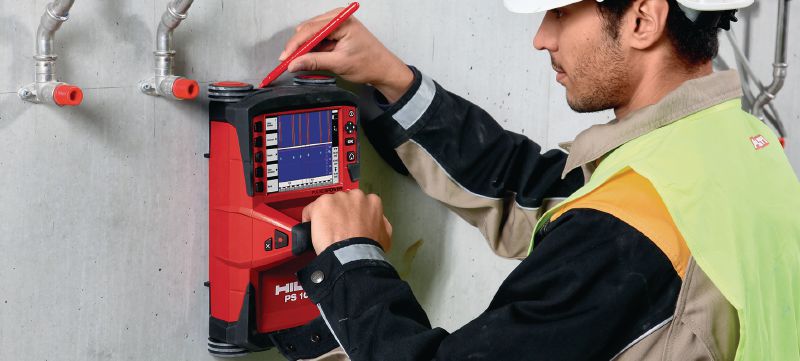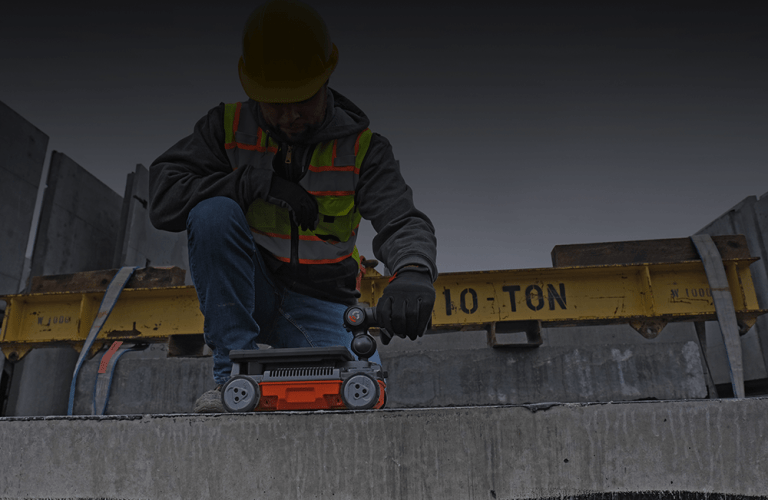Concrete Scanning: A Critical Step Towards Making Certain Architectural Stability and Safety And Security
In the realm of construction and framework upkeep, the importance of concrete scanning can not be overstated. This careful process holds the vital to unveiling possible hazards concealed below the surface area of apparently strong structures. By utilizing sophisticated modern technology and approaches, concrete scanning serves as a critical device in guaranteeing that the stability and safety of buildings and bridges are promoted to the highest criteria. However, past its surface-level effects, the function of concrete scanning prolongs much much deeper than satisfies the eye.
Relevance of Concrete Scanning
Concrete scanning plays an important role in guaranteeing the architectural stability and security of structures and framework projects. By making use of advanced innovations such as ground-penetrating radar (GPR) and electromagnetic induction, experts can non-destructively examine concrete frameworks to discover potential flaws, spaces, ingrained things, and reinforcement layout. This procedure allows very early detection of abnormalities that might compromise the security of a framework, avoiding expensive problems and making certain the security of occupants.
Prior to exploration, cutting, or coring into concrete, scanning aids identify the exact locations of rebar, post-tension cables, and other ingrained elements, reducing the danger of unintentional hits that can lead to structural weak points. In addition, concrete scanning help in quality control by confirming the density of concrete covers and finding any discrepancies that might influence the overall sturdiness of the structure.
Innovation for Concrete Inspection

Benefits of Very Early Discovery
Prompt discovery of architectural concerns can dramatically minimize risks and ensure the long life of construction projects. By recognizing potential troubles at an early stage in the building procedure, stakeholders can take aggressive measures to resolve concerns prior to they escalate into larger and a lot more expensive issues. One of the essential advantages of early discovery is the avoidance of architectural failings, which can posture serious safety and security risks and result in project delays and monetary losses.
In addition, early discovery enables prompt fixings and upkeep, which can aid extend the life-span of the framework. By attending to concerns promptly, construction teams can prevent pricey repairs and even the need for early replacement of architectural parts. This positive method not just saves money and time however likewise enhances the general security and resilience of the construction task.
Furthermore, early discovery can enhance project preparation and decision-making by providing stakeholders with useful understandings right into the condition of the structure. Armed with this info, project managers Full Article can make enlightened choices regarding building techniques, products, and timelines, causing much more effective and successful job outcomes.
Ensuring Structural Stability
Making sure the structural security of a building and construction project is critical to its security and durability. Concrete scanning plays a crucial role in making sure architectural stability by discovering potential concerns such as voids, delamination, or reinforcement rust that might endanger the integrity of the framework over time.
By making use of innovative scanning modern technologies like ground-penetrating radar (GPR) and electromagnetic induction, construction professionals can non-invasively evaluate concrete frameworks to identify locations of this content concern under the surface area. This aggressive strategy permits the early discovery of problems or weaknesses, enabling prompt repairs or reinforcement to stop structural failures.
Normal concrete scanning during various construction stages and throughout the life process of a structure can assist keep its security, reduce threats, and guarantee the security of residents. By prioritizing architectural stability through concrete scanning, building projects can enhance their strength and toughness, ultimately adding to higher security and durability.
Stopping Vital Failures
Carrying out regular examinations, such as concrete scanning, can disclose surprise problems like voids, fractures, or corrosion that could endanger the stability of a structure. By making use of advanced scanning innovations like Ground Passing through Radar (GPR) or Concrete X-ray, engineers can non-destructively assess the condition of concrete and recognize weak factors that require reinforcement or fixing.

Final Thought
In final thought, concrete scanning plays an important duty in making certain structural stability and safety and security by using innovative technology for very early detection of prospective concerns. This positive technique aids prevent critical failings and ensures the stability of structures. It is necessary to prioritize concrete assessment as a standard practice to protect the longevity and safety of structures and facilities.
Concrete scanning plays an important function in making certain the architectural integrity and security of buildings and facilities projects. Additionally, concrete scanning aids in high quality control by confirming the density of concrete covers and finding any discrepancies that might affect the overall longevity of the structure. Concrete scanning plays a vital duty in anonymous making certain structural stability by spotting possible issues such as voids, delamination, or support deterioration that might endanger the integrity of the framework over time.

In final thought, concrete scanning plays an important function in making certain structural integrity and safety by utilizing advanced technology for very early discovery of possible concerns.